



As we continue to see the rising impacts of a changing climate, the costs of fighting wildfires grow each year with longer, hotter, more unpredictable fire seasons. The USDA Forest Service has already experienced significant shifts in staffing and resources and estimates that within a decade, it will spend more than two-thirds of its budget to battle fires, while mission-critical programs will continue to suffer. Meanwhile, these catastrophic blazes are projected to burn twice as many acres by 2050.
Last week, Secretary Vilsack reiterated his call for Congress to change the way wildfire suppression is funded to prevent an ever-increasing amount of the Forest Service’s operating budget going to fight fires. He and Forest Service Chief Tom Tidwell met with regional foresters just as the 2016 fire season has begun with five times more acres already burned than this time last year, following 2015's record-setting fire season.
Year after year, the increasing cost of wildfire suppression forces USDA to transfer funds away from forest restoration projects that would help reduce the risk of future fires, in order to cover the high cost of battling the blazes. In 2105 a record 52 percent of the Forest Service's budget was dedicated to fire suppression activities, compared to just 16 percent in 1995. You can read more about USDA’s 2016 fire outlook on our website: www.usda.gov/fireoutlook.
Join us throughout the month of May as we take a look at how USDA’s approach to collaborative and climate smart policies have supported farmers, ranchers and forest landowners as they adapt in the face of a changing climate. Follow along on usda.gov, on the USDA blog and by using #USDAResults, or catch up on Chapter V on our Medium site.


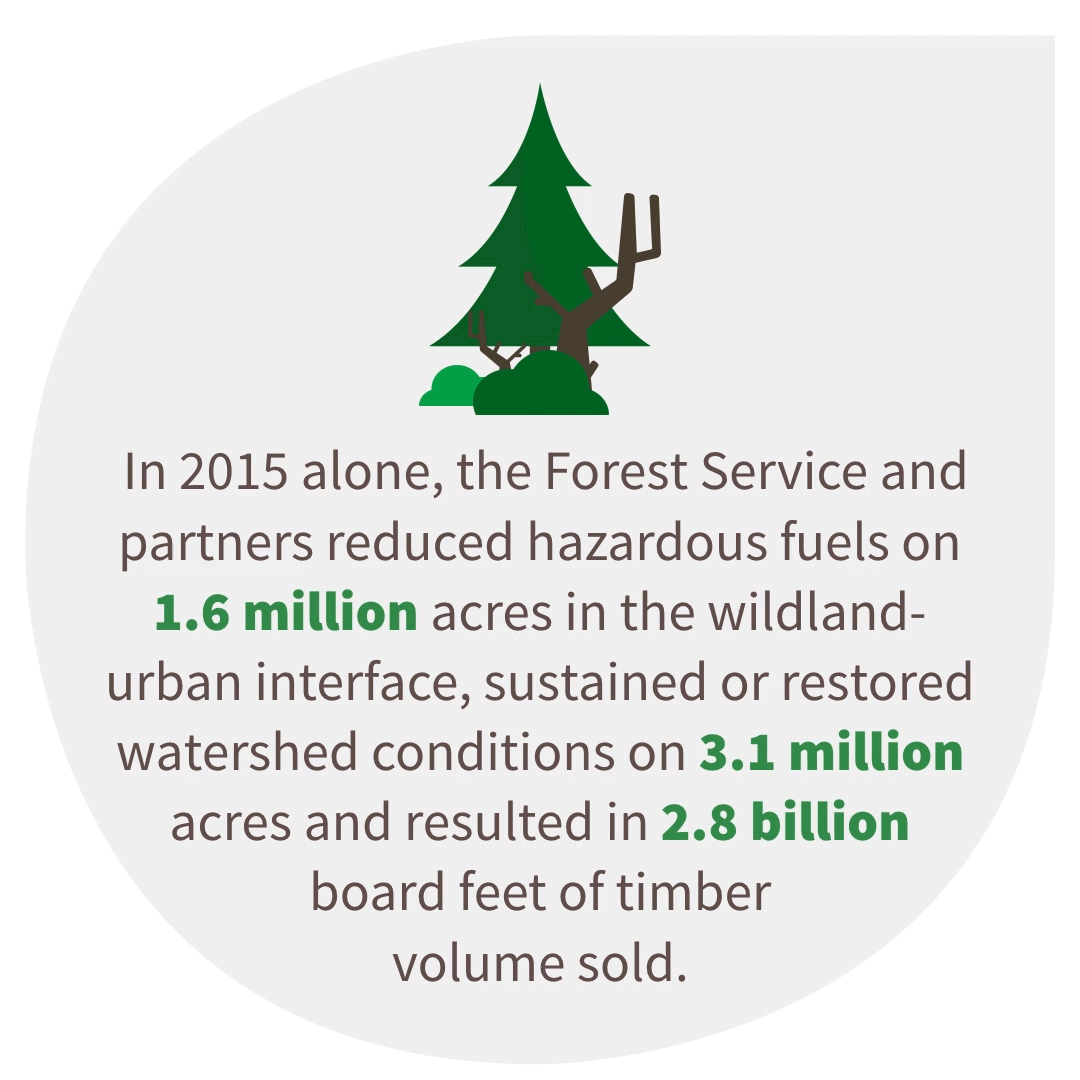
In May we’ll take a look at how USDA’s approach to collaborative and climate smart policies have supported farmers, ranchers and forest landowners as they adapt in the face of a changing climate.
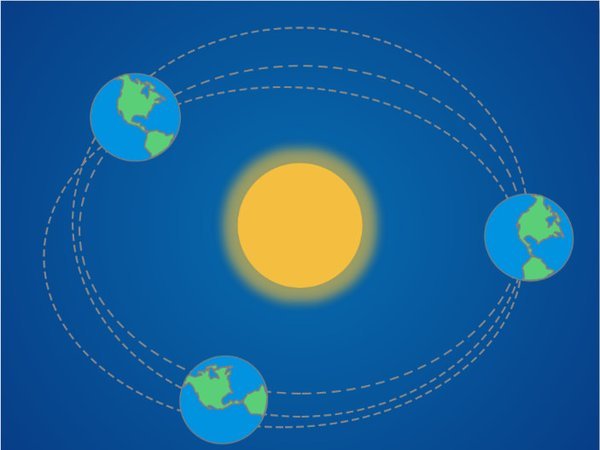
The climate change science and modeling education module explaining natural cycles of the Earth’s climate.
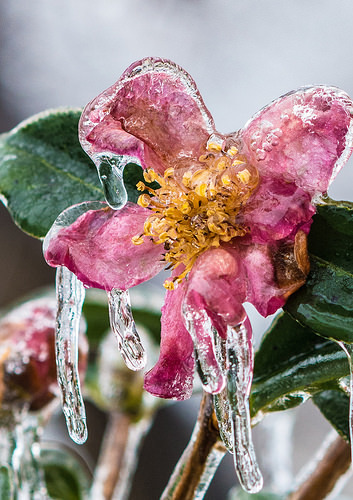
You might have noticed spring-like weather in the Northeast is arriving earlier than usual. Freezing rain covers flowers, plants and trees when unseasonably warm March is followed by last frost.
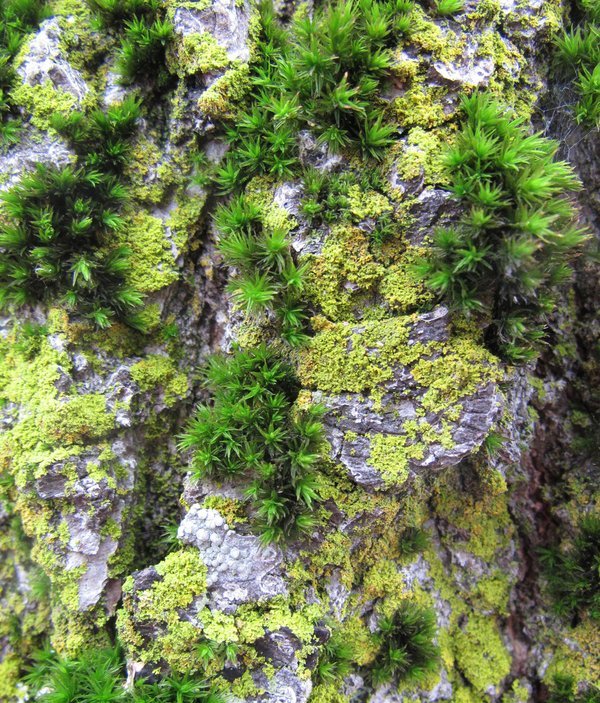
Moss growing on urban trees, such as this species sample of Lyell’s orthotrichum, is a useful bioindicator that can help monitor cadmium, a carcinogenic heavy metal, in the air.

The USDA Forest Service and Partners are gearing up for a significant 2016 wildfire season, underscoring the need to reform wildfire funding: www.usda.gov/fireoutlook.

Income Inequality: A Growing Threat to Eliminating Rural Child Poverty
Rural child poverty fell by 3 percentage points from 2012 to 2014. Over the past seven years, USDA and the Obama Administration have taken action to address the root causes and reduce the devastating effects of rural child poverty. As a record streak of private sector job creation has cut nationwide unemployment in half, to 5 percent, average incomes for rural and urban families alike climbed nearly 6 percent in the last two years of data, returning to 2003 levels.
Adaptation Resources for Agriculture in the Midwest and Northeast
In the Northeast and Midwest U.S., a changing climate is expected to continue impacting agriculture for the foreseeable future. From Minnesota to Maine and Maryland to Missouri, increasingly severe weather, variable temperatures, and at times droughty soil conditions are exacerbating the existing challenge of managing productive lands without degrading natural resources.
In Conversation with #WomeninAg: Dr. Cathy Kling
Every month, USDA shares the story of a woman in agriculture who is leading the industry and helping other women succeed along the way. This month, we hear from Dr. Cathy Kling, a Charles F. Curtiss Distinguished Professor of Agriculture and Life Sciences and a professor of economics at Iowa State University.
Local and Organic Food Shopping – Finding the Best Price
When comparing product prices between farmers markets and retail stores, local products are competitively priced – within a 10 percent price range – at farmers markets a majority of the time, even less expensive for some foods. Local, certified organic products at farmers markets are almost always competitively priced when compared to prices at retail stores.
“Climate Change and the Water Cycle” – USDA’s Southwest Climate Hub Launches Education Unit for 6-12th Graders
USDA has created a curriculum for teaching today’s students about climate change and educating tomorrow’s farmers, ranchers, and decision makers. The Department’s Southwest Regional Climate Hub has partnered with the Asombro Institute for Science education to build “Climate Change and the Water Cycle,” a scientifically rigorous education unit for 6th -12th grade students.
USDA Partners With the Department Of Defense to Fight Climate Change
The Department of Agriculture and Department of Defense have an extensive relationship coordinating land management activities, and are now working together to cope with the pressures of climate change.
Moss Study Helps Identify Pollution Hotspots
In December 2013 when Sarah Jovan and Geoffrey Donovan, two scientists with the U.S. Forest Service’s Pacific Northwest Research Station in Portland, Oregon, crisscrossed the northwest area of their city they had no idea they were onto something big.
Mapping Out Farmers Market Success
Anticipation is building for the opening of seasonal farmers markets in communities across the country—especially in Takoma Park, MD, at the Crossroads Farmers Market. With over 1,000 visitors each week and vendors offering 131 different fruits and vegetables, market manager Michelle Dudley has a lot of work to do figuring out the perfect placement of farmers and vendors coming to the market starting June 1.
Concannon: Reauthorize Child Nutrition Programs So They Benefit Children
It may seem like common sense for child nutrition programs to benefit children, but some see it differently today. Nationwide, schools have made the lunchroom a healthy environment. In fact, in only the second school year of full implementation of the Healthy, Hunger-Free Kids Act (HHFKA), over 98 percent of schools participating are already meeting the healthier meal standards.
Wildlife after Wildfire in Southern Appalachia
It was my first prescribed burn. After weeks of training and months of anticipation, I was finally on the ground – drip torch in hand – ready to apply fire to restore the mixed pine-hardwood forests at the edge of the Blue Ridge Mountains on the Pisgah National Forest.
Hawaii’s Women in Technology Program Cultivates the Next Generation of STEM Leaders
If America is to maintain its role as a global leader, it needs to develop more world-class talent in science, technology, engineering, and mathematics (STEM), especially among underrepresented groups, such as women and minorities.
Spring Climate Trends Changing in the Northeast
You might have noticed spring-like weather in the Northeast is arriving earlier than usual. There is reliable evidence from many studies that conditions in the Northeast and upper Midwest have become warmer and wetter in recent decades, especially before the coming of winter and spring.

Forest Service Ready for a Potentially Bad Fire Season
Broadcast Date: Tue, May 17, 2016
Concerns are mounting about what this new wildfire season will bring, especially for California. (Gary Crawford Sec'y Tom Vilsack)
Actuality: Forest Service Preparations for Another Active Fire Season
Broadcast Date: Tue, May 17, 2016
Agriculture Secretary Tom Vilsack describing some of the many preparations being made for what could be another nasty wildfire season.
Vilsack: Change the Way Wildfire Suppression is Paid For
Broadcast Date: Tue, May 17, 2016
The Agriculture Secretary is once again asking for a change in how wildfire suppression activities are paid for. (Gary Crawford and Sec'y Tom Vilsack)
New Study Says Trans-Pacific Partnership Would Boost U.S. Ag. Sector
Broadcast Date: Thu, May 19, 2016
A new report echoes what other studies have found: The Trans-Pacific Partnership Agreement would have major positive effects for the agricultural sector and for the U.S. general economy. (Gary Crawford and Sec'y Tom Vilsack)
A Multi-Purpose Conservation Tool - A Methane Digester
Broadcast Date: Thu, May 19, 2016
Conservation is just one of the many benefits created by a methane digester used by a California family dairy farm. (Rod Bain and Bob Giacomini)
Actuality: Environmental And Economic Benefits Of Methane Digester
Broadcast Date: Thu, May 19, 2016
California dairy producer Jill Giacomini Basch explains how the methane digester on their farm is good for their local environment, their neighbors, and their bottom line.
Actuality: USDA Support And Methane Digester
Broadcast Date: Thu, May 19, 2016
California dairy producer Jill Giacomini Basch explains how financial and technical support in part by USDA made it possible for her family farm to obtain and operate a methane digester.
New Tools for Starting New Farmers Markets and Local Food Systems
Broadcast Date: Mon, May 9, 2016
If you want to start a farmers market or other local food activity, there are several USDA tools that could help. (Gary Crawford and Sec'y Tom Vilsack)
Much More Money Requested for Handling Drug Epidemic
Broadcast Date: Wed, May 18, 2016
How would the one billion dollars the Administration is requesting for expanded drug programs be used? (Gary Crawford, Michael Botticelli and Sec'y Tom Vilsack)

US wildfire-fighters making plans for 2016 season (Associated Press)
The nation's primary wildfire-fighters are getting ready for the 2016 season, which is expected to be worse than average in Hawaii, Alaska and the Southwest. U.S. Forest Service Chief Tom Tidwell and Agriculture Secretary Tom Vilsack will meet with regional forest officials Tuesday to discuss plans and preparations.
Wildfire-fighters warn 2016 could be bad in California (Associated Press)
The nation's primary wildfire-fighters say California could face a dangerous and difficult fire season this year despite a relatively wet winter. U.S. Forest Service Chief Tom Tidwell and Agriculture Secretary Tom Vilsack said Tuesday that a five-year drought has left 40 million dead and fire-prone trees in California.
Severe wildfire season is the new normal, officials say (USA Today)
This year should bring a ‘normal’ wildfire season in most of the U.S., Agriculture Secretary Tom Vilsack said Tuesday. The problem, Vilsack said, is that the new normal wildfire season is longer and includes tens of thousands of fires burning millions of acres of forest and destroying thousands of homes. “The wild land fire environment has profoundly and significantly changed over time,” Vilsack said. The fire season itself is now on average 78 days longer than it was in 1970. And in the West, for example, there has been a sevenfold increase in fires of 10,000 acres or more.
Vilsack fears 'serious situation' in bone-dry Calif. (E&E News)
The coming wildfire season will be especially severe in California and the Southwest, Agriculture Secretary Tom Vilsack said today, as the Department of Agriculture continues to press Congress to change the way it pays for firefighting. "We're very concerned about California," Vilsack said. The state has an estimated 40 million dead trees -- 29 million of which died just last year -- to serve as potential fuel for forest fires, he said on a conference call with reporters. If conditions remain dry in California, Vilsack said, "you're looking at a very serious situation."
USDA expects normal, but significant fire season (Capital Press)
While a “normal” wildfire season is expected in most of the country, that new normal is far worse than it used to be and will still mean thousands of fires and hundreds of thousands of charred acres, particularly in California. The wildland fire environment has profoundly changed, with the fire season lasting longer and fires burning hotter and larger and claiming more ground, USDA Secretary Tom Vilsack said during a conference call with the press on Tuesday.
Editorial: Congress fails to fix wildfire issue (Albany Democrat-Herald)
The U.S. Forest Service’s top officials met this week in Washington to take a look at prospects for this year’s wildfire season. Just stop us if any of this seems familiar. You might recall that 2015’s wildfires roared through a record-breaking year — and, frankly, these are the types of records that you hope don’t get broken.
Wildfires getting worse with climate change (Lincoln Journal Star)
Brad Fiala is watching grass grow. And it makes him nervous. “I’m happy right now with the rains we’ve gotten and everything being green … but if we don’t get rain (in June and July) as predicted, I’m going to be really nervous come July,” said the Ainsworth Fire and Rescue Chief. As the spring growth dries out, Fiala said, it could create enough fuel to feed a blaze in the Niobrara River Valley bigger than the 2012 wildfire that burned more than 76,000 acres over 10 days.
Forest Service predicts ‘significant’ wildfire season (The Hill)
The Forest Service is preparing for a “significant” wildfire season on its lands after a very rough start. Agriculture Secretary Tom Vilsack, whose department oversees the agency, along with Forest Service Chief Tom Tidwell, met with top land managers Tuesday to learn how firefighters are preparing for wildfires and what resources they’ll need. The agency said fires up to this point have been five times worse than last year, and last year’s season as a whole set a fire record.
As fire season arrives, this could be hottest year ever (NPR/Marketplace)
U.S. Agriculture Secretary Tom Vilsack and Forest Service Chief Tom Tidwell meet Tuesday with stewards of regional forest lands to discuss preparations for fighting wildfires this season. Last year was a record fire season. And with 2016 poised potentially to be the hottest year on record, many experts expect another difficult year for firefighting.
Feds brace for another hot, expensive wildfire season in U.S. (AGWeek)
The nation's top foresters on Tuesday warned of another hot, dry and costly wildfire season in 2016 with global climate change, droughts and more people living in the woods leading to more acres and more homes burned in more states. U.S. Agriculture Secretary Tom Vilsack and Forest Service Chief Tom Tidwell forecasted which parts of the nation are expected to see the most critical fires and laid out their plans to fight them -- with California listed as the most ripe for major disasters.
State faces typical wildfire season; West Coast could have harsh year (Cronkite News/Arizona PBS)
Arizona is expected to have a normal wildfire season this summer after several years in which the state saw relatively little fire activity, state and federal officials said Tuesday. But while Arizona can expect to see an increase over recent years, Agriculture Secretary Tom Vilsack said officials are most concerned about drought-stricken Western states, particularly California. “We are seeing longer, more intense, costlier fires,” Vilsack said of the trend in wildfires across the country in recent years.
Fire Fighters Watching Canadian Blaze, Worried About Summer Conditions In U.S. (NPR)
The out-of-control wildfire burning in northern Alberta has fire officials south of the border casting a nervous eye toward the summer. The latest news that the Canadian blaze has moved into oil fields after destroying parts of an entire city comes as the U.S. Forest Service issues its annual wildfire forecast for the western United States Tuesday. And the latest forecast is nothing short of a warning to communities in the western U.S. that a similarly destructive wildfire there is quite likely.
Wildfires getting worse with climate change (Lincoln Journal Star)
Brad Fiala is watching grass grow. And it makes him nervous. “I’m happy right now with the rains we’ve gotten and everything being green … but if we don’t get rain (in June and July) as predicted, I’m going to be really nervous come July,” said the Ainsworth Fire and Rescue Chief. As the spring growth dries out, Fiala said, it could create enough fuel to feed a blaze in the Niobrara River Valley bigger than the 2012 wildfire that burned more than 76,000 acres over 10 days.
Vilsack says Congress should step up to put out wildfires (Agri-Pulse)
Agriculture Secretary Tom Vilsack says the Forest Service and the Interior Department have “done just about everything we can do” to properly fund the forest management that prevents catastrophic fires - now it's Congress' turn to step up to the plate. “Only Congress can fix it,” Vilsack told reporters on Tuesday. “Congress has been left off the hook. Congress has to do its work. Everyone else is working hard.”
Drought, dead trees add up to big fire danger for California (SF Gate)
Stubborn drought conditions and an epidemic of dead and dying trees mean California is facing a potentially catastrophic fire season, federal officials said Tuesday as they promised to send extra money and personnel to the state. Similar circumstances contributed to record acreage lost to wildfires in the West last year, including three blazes that laid waste to Lake County, and top officials at the U.S. Department of Agriculture said improved rain and snow totals during the winter did little to ease the threat.
As U.S. moves to cut greenhouse emissions from farms, new study finds big global challenge (Science Magazine)
From cow burps to decaying food waste, agriculture is a major source of greenhouse gas emissions. Researchers estimate farms are responsible for about 13% of total global emissions, making it the world’s second-largest source, after energy production. And now that nations have committed to trying to hold global warming to no more than 2°C above pre-industrial levels, researchers and policymakers are looking for practical ways to cut agriculture’s contribution to climate change.
USDA Plan to Combat Climate Change (RFD-TV)
The U.S. Department of Agriculture is enhancing its mission to reduce greenhouse gas emissions with a $72.3 million investment. Last year, the USDA announced its 10 Building Blocks for Climate Smart Agriculture. The initiatives are expected to reduce net emissions and boost carbon storage by over 120 million metric tons of CO2 by 2025. They recently announced investment will go to the environmental quality incentives program to be used for soil health and nutrient stewardship projects, something Ag Secretary Tom Vilsack says makes him confident in the Ag industry's efforts to combat climate change. “American agriculture and forestry are absolutely up to the challenge of climate change," says Sec. Vilsack "and will seize the opportunity it presents.”

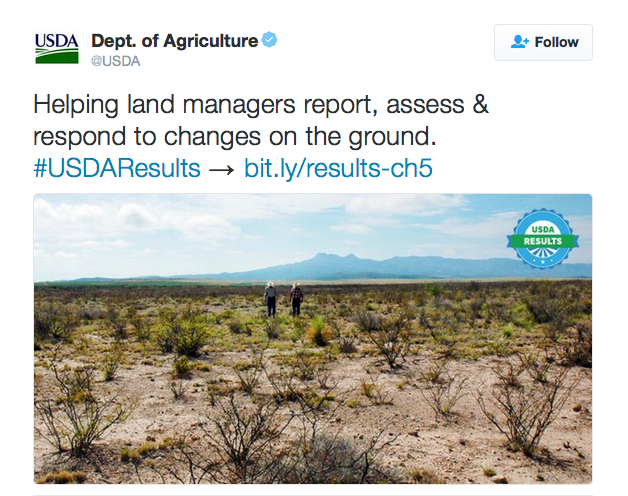 |
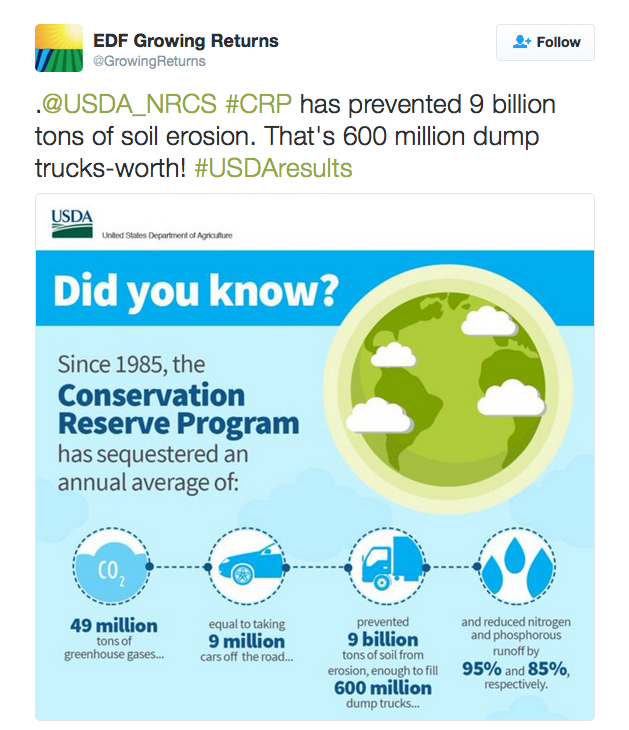 |
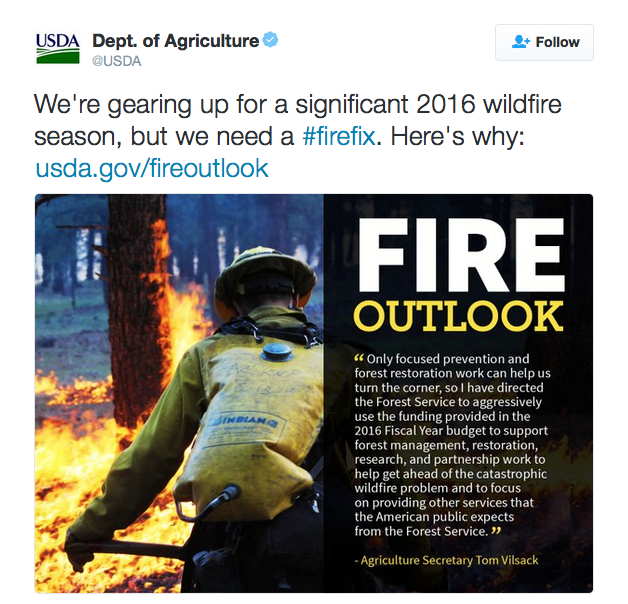 |
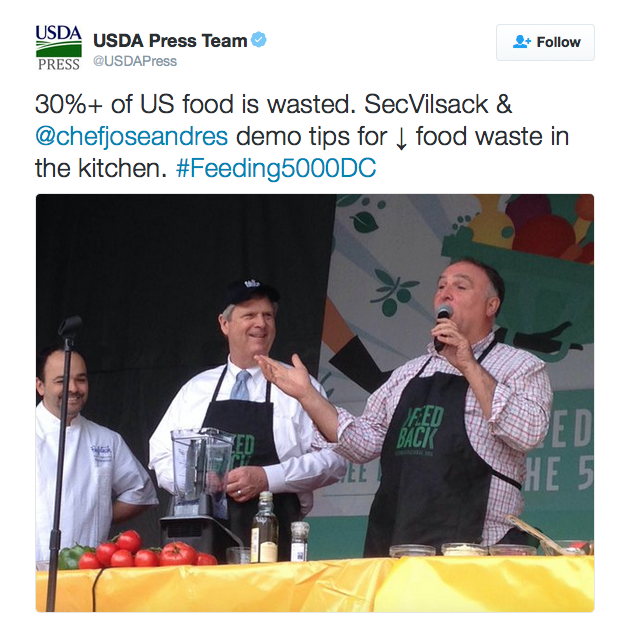 |
 |

|


















